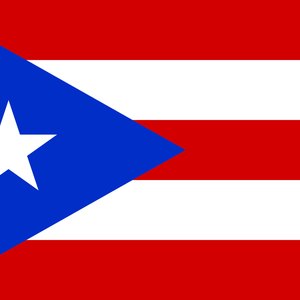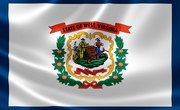
As a territory of the United States, Puerto Rico is in a gray area when it comes to paying income taxes to the IRS. But while bona fide residents of Puerto Rico don't pay federal income taxes, the commonwealth has its own tax laws. Currently, Puerto Rico has a personal income tax of up to 33 percent, with the exact amount based on your taxable income.
Who Must File Puerto Rico Income Taxes?
If you live in Puerto Rico, your income will be taxed based on your resident status and from where your income comes. Taxpayers who are Puerto Rican residents pay personal income tax on all income, no matter where it came from. Nonresidents pay income tax only on their Puerto-Rico source income.
There is an exception for income that falls below a certain amount. If you earned less than $3,000 on services provided in the tax year in question, you won't pay Puerto Rico tax on that amount under a de minimis exception. You'll have to have spent less than 90 days in Puerto Rico and have provided the services to a non-Puerto Rican employer to qualify.
What Are the Forms to Use?
Although the Puerto Rican tax filing system is modeled after the U.S.'s, you'll have to visit the Puerto Rico Department of the Treasury to get the forms and instructions you need. The site is in Spanish. Form 482 is used to report worldwide income. Non-Puerto Rico residents will use Form 482 to report income they earned from Puerto Rican employers.
If you're not a bona fide Puerto Rican resident, you'll also need to complete Form 1040 with the IRS for all the income you've earned worldwide. What about the income you were taxed on in Puerto Rico? You simply claim that as a tax credit on Form 1116.
What Is the Tax Rate in Puerto Rico?
There are varying personal tax rates that Puerto Rican residents must pay:
- 7 percent for earnings of $9,001-$25,000
- 14 percent plus $1,120 for earnings of $25,001-$41,500
- 25 percent plus $3,430 for earnings of $41,501-$61,500
- 33 percent plus $8,430 for earnings of $60,501 and up
What Are the Filing Deadline and Extension Process?
Luckily, keeping up with when to pay your taxes is easy. The filing deadline for each taxable year falls on the same date as U.S. government tax returns, which is April 15. However, due to the holiday and weekend, the date in 2022 is moved to April 18. You'll be automatically granted a six-month extension on filing as long as you submit the form to request an extension by April 18.
If you need an extension for the previous tax year, you'll use Form AS 2644. Starting with tax year 2019, taxpayers are required to file the request for an extension electronically. If you owe taxes, you're still responsible for paying those to avoid penalties for late payment, but if you're sure you're due a refund, filing for an extension won't affect you.
What Are the Penalties for Late Filing and Underpayment of Taxes?
The Government of Puerto Rico Treasury Department has a fee schedule specific to noncompliance with its tax laws. This starts with the Secretary of the Treasury's permission to charge an administrative fee of $5,000 per offense, or $10,000 per incident for repeat offenders.
But you're more likely to be hit with a penalty for failure to pay or withhold. For that, the Treasury Department charges a penalty equal to the amount you owed. This penalty applies to both residents and nonresidents.
Where Do I Mail/E-file My Puerto Rico Return?
For your Puerto Rico taxes, it's best to file individual income tax returns through the Puerto Rico Department of the Treasury's Virtual Treasury system. But you can also file by mail or in person.
If you want to mail your return, you'll send it to: Department of the Treasury, PO Box 9022501, San Juan, PR 00902 - 2501. If you want to submit your taxes in person, go to the Department of the Treasury offices in Old San Juan, which is in the Intendant Alejandro Ramírez Building, Paseo Covadonga #10.
How Do I Pay Taxes Due?
If you file through the virtual portal, you can remit tax payments online after you've completed the filing process. But whether you're paying online or in person, you'll need to pay by the due date and use either a credit card, debit card or ACH, which takes the money directly from your bank account. The Treasury Department does not accept personal checks, cash or wire transfers.
If you're due a refund, you can speed the process up by providing your bank account information. The Treasury Department will transfer the refund to your account as soon as it's been processed.
Where Can I Check My Puerto Rico Refund Status?
The wait for a refund to deposit can seem agonizing. After you file forms for your tax return, you can go directly to the Treasury's Refund page to get an update on the status. On this same page, you can also update your address or file a claim for a refund that was erroneously deposited or claimed.
What About Taxes if You’re Self-employed?
If you earn self-employment income during the previous calendar year, you can choose to pay taxes on your gross instead of net. The tax rates for self-employed professionals in Puerto Rico start at 6 percent for $100,000 in earnings or less and top off at 20 percent for earnings over $500,000.
What About Taxes if You’re a Business?
Companies doing business in Puerto Rico must pay a surtax on net income. This starts at 5 percent on income of $75,000 or less and goes all the way to 19 percent plus a surtax for income of $275,000. The maximum a business will pay is 37.5 percent.
Puerto Rico Residency Requirements
If you're a nonresident of Puerto Rico, you'll only pay taxes on the income you make from Puerto Rican businesses. So what determines your filing status? Puerto Rico's government uses three tests to determine residency.
- The presence test: This is determined by the number of days each year that you spend in Puerto Rico. You're considered a resident if you live in the territory for 183 days of the current tax year or a combined total of 549 days in the current and past two tax years, with at least 60 days per year in the territory.
- The tax home test: If your primary place of employment is in Puerto Rico, you're considered a resident. For self-employed or under-employed individuals, Puerto Rico is your tax home if your primary residence is there.
- The closer connection test: This test looks at whether you have a closer connection to Puerto Rico versus the U.S. If your closer connections are the U.S., you fall under IRS tax laws and will likely pay taxes only on income you earn from Puerto Rico businesses.
Completing a Puerto Rico Tax Return is easier than ever, thanks to the online portal. But knowing when you're required to file a Puerto Rico return, a U.S. Federal Tax Return or a combination of both can be tricky. Once you've learned the requirements, though, you'll have the information in mind for future tax years.
Rates and dates in this article are correct as of publication. But check for any changes with the Puerto Rico Department of the Treasury before you file.
References
- Department of the Treasury: Rules and Regulations
- Puerto Rico Department of the Treasury: Contribución Sobre Ingresos
- Puerto Rico Department of the Treasury: 2019 Solicitud de Prórroga para Rendir la Planilla de Contribución Sobre Ingresos / Request for Extension of Time to File the Income Tax Return
- Puerto Rico Department of the Treasury: Regulation No. 9237
- Puerto Rico Department of the Treasury: Instrucciones Para Radicar la Planilla
- VGMM: A Publication From the Tax Division
- Puerto Rico Department of the Treasury: Reintegro
- Relocate Puerto Rico: Understanding the Bona Fide Residency Requirement for Act 60 Tax Incentives
- PWC: Individual - Taxes on Personal Income
Resources
Writer Bio
Stephanie Faris has written about finance for entrepreneurs and marketing firms since 2013. She spent nearly a year as a ghostwriter for a credit card processing service and has ghostwritten about finance for numerous marketing firms and entrepreneurs. Her work has appeared on The Motley Fool, MoneyGeek, Ecommerce Insiders, GoBankingRates, and ThriveBy30.

